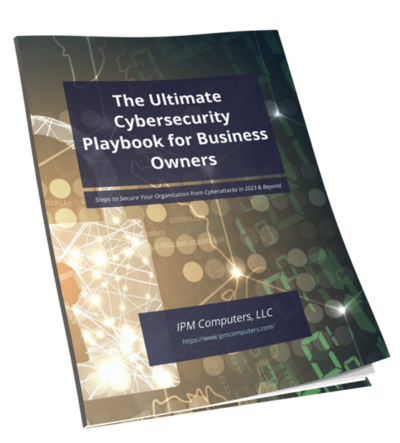As we continue 2025, small businesses are finding themselves at a critical crossroads where technology shapes every aspect of their success. While new tech brings incredible opportunities, it also presents hurdles that business owners need to tackle head-on.
Key challenges include:
- Increasing Cybersecurity Threats: Small businesses face heightened risks from cyberattacks, including ransomware and phishing schemes.
- Budget Constraints: Limited financial resources complicate the adoption of advanced technologies.
- Remote Work Infrastructure: Optimizing remote work setups becomes essential for maintaining productivity.
Addressing IT challenges is crucial for growth and security. Leveraging outsourced IT in Wilmington can provide practical solutions tailored to enhance your business’s resilience and competitiveness. By focusing on comprehensive Wilmington IT management strategies, small businesses ensure smoother operations and sustained success.
1. The Cybersecurity Landscape
Cybersecurity threats are constantly changing, posing significant challenges for small businesses. Some of the most urgent threats include:
- Ransomware: This harmful software can lock important systems, demanding a ransom for their release.
- Phishing: Cybercriminals use deceptive emails or messages to trick employees into revealing sensitive information.
- Insider Attacks: Employees or contractors may intentionally or unintentionally compromise data security.
Statistics highlight the importance of addressing these threats. In 2024, an alarming 94% of small and medium-sized businesses reported experiencing cyberattacks. Such figures indicate that no business is too small to be targeted. A breach not only leads to financial losses but also harms customer trust and brand reputation.
Strong cybersecurity measures are crucial for protecting sensitive data and maintaining customer confidence. Implementing effective strategies can greatly reduce vulnerability to cyber threats. Solutions include:
- Employee Training Programs: Regular training equips staff with knowledge on identifying and responding to potential threats.
- Regular Risk Assessments: Conducting thorough assessments helps identify weaknesses within the IT infrastructure, enabling proactive measures against potential attacks.
- Leveraging Managed Service Providers (MSPs): Collaborating with MSPs provides access to expertise in cybersecurity, offering comprehensive support tailored to specific business needs.
2. Budget Constraints and Cost-Effective Solutions
Small businesses often face significant challenges due to budget constraints when attempting to adopt technologies. These limitations can hinder growth, innovation, and competitiveness. Addressing these challenges requires strategic planning and resource allocation.
Strategies for Prioritizing Essential Tech Needs
- Assess Business Objectives: Understand the core goals of the business and align technology investments accordingly.
- Identify Critical IT Needs: Focus on essential tools that directly impact productivity and customer engagement.
- Evaluate Current Infrastructure: Determine which existing systems can be optimized instead of replaced.
Exploring Cost-Effective Alternatives
Utilizing cost-effective IT solutions is crucial for maximizing value while staying within budget constraints. Options include:
- Cloud Computing: Embrace scalable cloud services that offer flexibility without the need for significant upfront investments. Services such as Infrastructure as a Service (IaaS) allow businesses to pay only for what they use.
- Open-Source Software: Leverage open-source applications that provide robust functionality at little to no cost. These solutions often have strong community support and customization options.
Optimizing IT Spending
A strategic approach to optimizing IT spending is vital for small businesses:
- Implement Scalable Cloud Solutions: Transitioning to cloud-based infrastructures can reduce costs associated with hardware maintenance and upgrades.
- Outsource Non-Core IT Tasks: Partnering with MSPs allows businesses to access professional expertise without hiring full-time staff, streamlining operations and reducing overhead costs.
3. Remote Work Infrastructure Challenges
The shift to remote work has reshaped the operational landscape for small businesses. Optimizing remote work infrastructure becomes crucial in supporting a distributed workforce. A robust infrastructure ensures productivity and employee engagement, essential factors for sustaining business growth.
Common Challenges in Remote Work Environments
Connectivity issues often arise in remote environments. These challenges can hinder collaboration and disrupt workflows. Addressing these concerns requires a multifaceted approach:
- Secure VPN Implementation: Establishing Virtual Private Networks (VPNs) provides secure access to company resources, safeguarding sensitive data from potential breaches while allowing employees to work efficiently from any location.
- Utilizing Cloud Platforms: Tools like Microsoft Teams enhance communication and collaboration among team members. These platforms facilitate real-time collaboration through file sharing, video conferencing, and project management features.
Importance of Technology Investments
Investments in these areas not only mitigate common remote work IT challenges but also foster an environment that promotes productivity and teamwork. Implementing reliable technology solutions ensures that employees remain connected and focused on their tasks.
Prioritizing Operational Needs
In navigating the complexities of remote work infrastructures, businesses must prioritize solutions that align with their specific operational needs. This proactive approach addresses potential pitfalls while enhancing overall efficiency in the workplace.
Building a Foundation for Future Success
Adopting these strategies helps small businesses to thrive amidst the evolving landscape of remote work, laying a solid foundation for future success as they face additional challenges.
4. Data Management and Compliance Issues
Small businesses face significant risks associated with inadequate data management practices. Backup failures can lead to irreversible data loss, jeopardizing not only business operations but also customer trust. Implementing effective data management strategies is paramount for ensuring business continuity.
Understanding compliance regulations is essential for SMBs, particularly those that handle sensitive information. Regulations such as HIPAA impose strict guidelines on data handling processes. Non-compliance can result in heavy fines and reputational damage. It’s vital for businesses to stay informed about relevant regulations and their implications for operations.
To mitigate risks associated with data management and compliance, consider the following effective solutions:
- 3-2-1 Rule for Backups: This strategy recommends maintaining three total copies of your data: two on different storage devices, and one off-site. This approach ensures redundancy and quick recovery in case of a failure.
- Automated Compliance Checks: Utilize tools that automate compliance monitoring to ensure adherence to regulations without manual oversight. These tools can flag potential issues before they escalate into serious violations.
Keeping Businesses Secure In 2025 Without Breaking the Bank
The world of IT for small businesses is constantly changing and growing. To stay ahead of the competition, it’s important to be proactive to any IT problems.
Here are some key things to think about:
1. Proactive Strategies
Instead of waiting for issues to arise, take a proactive approach by regularly evaluating your technological needs and vulnerabilities. This will help you identify potential threats before they become a problem.
2. Expert IT Consulting
Consider hiring professional IT consultants who can provide customized solutions that align with your specific business goals. They can help you find cost-effective technologies while also ensuring that your infrastructure is prepared for the future.
3. Comprehensive Support
Partnering with MSPs can be beneficial as they offer ongoing risk assessments and employee training. This is crucial for creating a workplace culture where everyone understands the importance of cybersecurity.
By investing in these strategies and resources, you’ll not only improve your security but also support the growth of your business.
Frequently Asked Questions About IT Management
What are the top IT challenges small businesses will face in 2025?
In 2025, small businesses will encounter various IT challenges. Budget constraints for adopting advanced technologies, remote work infrastructure issues, and data management and compliance concerns. Addressing these challenges is crucial for growth and security.
How can small businesses protect themselves from increasing cyber threats?
To combat the rising cyber threats such as ransomware and phishing, small businesses should implement robust cybersecurity measures. This includes employee training programs, conducting regular risk assessments, and leveraging Managed Service Providers (MSPs) for comprehensive support to safeguard sensitive data and maintain customer trust.
What strategies can small businesses use to manage budget constraints while adopting new technologies?
Small businesses facing budget constraints can prioritize essential tech needs by exploring cost-effective alternatives like cloud computing and open-source software. Implementing scalable cloud solutions and outsourcing non-core IT tasks can also help optimize IT spending without overspending.
What are the key considerations for optimizing remote work infrastructure?
To optimize remote work infrastructure by 2025, it is important to address connectivity and collaboration issues. Solutions include implementing secure VPNs for safe access to company resources and utilizing cloud platforms like Microsoft Teams to facilitate seamless communication among distributed teams.
How can small businesses ensure effective data management and compliance?
Effective data management practices are vital for small businesses to avoid risks such as backup failures. Following the ‘3-2-1 rule’ for backups—keeping three copies of data on two different media with one off-site—and utilizing automated compliance checks can help ensure adherence to regulations like HIPAA.
Why is it important for small businesses to address IT challenges proactively?
Proactively addressing IT challenges is essential for small businesses to stay competitive. By leveraging managed services in Wilmington tailored to specific business goals, companies can future proof their technology investments and enhance their overall operational efficiency.






